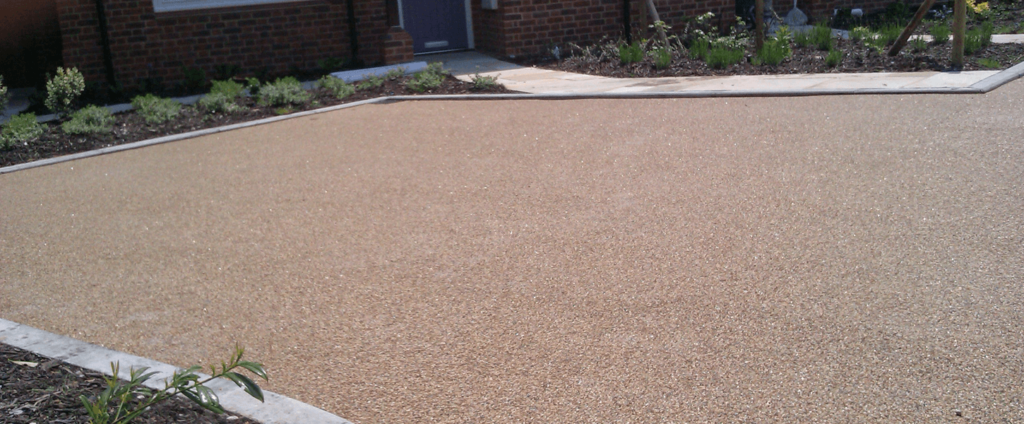A resin bonded driveway could be a fantastic choice for creating an attractive and practical driveway. Nevertheless, it’s crucial to recognise the issues that may arise with resin bound driveways and learn how to prevent or address them. Proper application is a significant first step to avoid encountering problems.
What is a resin bound driveway?
A resin bound driveway is a surface material bound by resin. Underneath, there is a smooth base made of materials like asphalt or concrete. The composition of the base is not critical, as long as it’s flat and sturdy.
The key feature of the driveway is the resin bound surface, formed by mixing resin with aggregates of stones and/or gravel. These materials are blended in a forced action mixture and then trowelled onto the base layer to create a smooth and level finish.
Advantages of choosing a resin-bound driveway:
- Provides a seamless, smooth, and attractive finish, giving your driveway a clean and modern look.
- Offers a wide range of colors and textures for a personalised look.
- Permeable surface allows moisture to drain, reducing standing water and damage risks.
- Can be contoured to fit any driveway shape.
- Boasts durability and longevity.
Resin bound vs. resin bonded driveways:
Before addressing common problems, it’s crucial to distinguish between resin bound and resin bonded driveways. The resin bonded driveway differs significantly from the bound type.
In a resin bonded driveway, the resin is placed directly onto the base layer, and then the aggregate is poured on top. It’s a more affordable option, but it lacks the durability and permeability of the resin bound system.
Common issues with resin bound driveways:
1. Curing too quickly:
Properly applying resin driveways can be challenging due to their quick curing time. Factors affecting curing include ambient air temperature and the colour of the stones. If the curing time is too quick, it can lead to looser bonding and the potential for cracks.
Choosing the right time for installation is crucial, considering relative humidity and surface temperature.
2. Surface detachment:
When the resin bound surface cracks and detaches from the base, it may be due to improper sealing, leading to compromise from the frost/thaw cycle. Fixing this problem is difficult, and often requires the entire driveway to be redone.
3. Cracking:
Similar to surface detachment, cracking is related to the base layer. Poor installation is usually the cause, and it can lead to reflective cracking and peeling. Cracks are not only an aesthetic issue but also a safety concern.
4. Wet resin mixture during installation:
Moisture during installation can compromise the strength and finish of the resin bound surface. Keeping the mixture dry is essential.
5. Discoloration:
Discoloration can result from rust spotting, resin interaction with the aggregate, or surface clouding due to moisture during curing.
6. Loose stones:
Insufficient bonding between the aggregate and resin can lead to loose stones on the surface. Proper mixing ratio and laying depth can help prevent this problem.
7. People and animals walking on the curing surface:
Weight on the resin bound surface while it’s curing can cause damage. Careful monitoring and warning signs can prevent this issue.
8. Bumps on driveways:
Bumps usually result from issues with the sub base. Ensuring a flat base before applying the resin surface can avoid this problem.
9. Drainage problems:
Incorrect installation can hinder the surface’s permeability, causing water to pool. No quick fix is available for this issue.
10. Running out of resin or aggregates:
Estimating materials accurately is essential to avoid running out during installation. Order slightly more materials to ensure full coverage.
In conclusion, a resin bound driveway offers numerous benefits, but it’s important to be aware of potential problems and address them promptly. Preventive measures are always better than dealing with issues afterward, ensuring a smooth and successful project.


